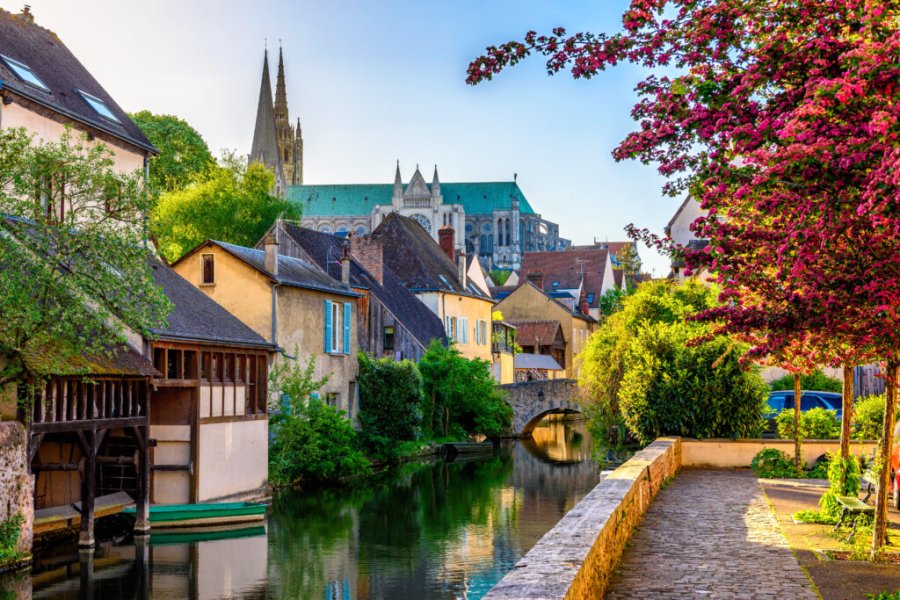Travel Guide Dnipropetrovsk (Дніпропетровськ)
Find an accommodation
Advertising
The third largest city in Ukraine by population, Dnipro is located on the steep banks of the Dnieper River, where its tributary, the Samara River, flows into the area. Called Dnieper/Dnipro by its inhabitants, the city officially became Dnipro in May 2016 following the application of the decommunization law. Dnipro is known as an industrial centre of high technology, metallurgy and commerce, but also for its green hills and rich history. From the beginning of the 20th century until today, Dnipro has been one of the main steel centres in Eastern Europe. Since the 1950s it has also been a major space research centre. The birthplace of Leonid Kuchma, former Ukrainian President who was the director of the largest missile factory in Europe, and Yulia Timoshenko, Ukrainian politician and leader of the Orange Revolution. The city surprises at first sight by all the contrasts it offers: industrial city on one side, but always very green on the other thanks to the abundance of parks it is provided with. Moreover, far from the old industrial cities of Ukraine, this city shows an incredible vitality. The main avenue, Dmytra Yavornytskoho (formerly Karla Marksa), seems to be engaged in a challenge of luxury and fashion, offering a series of boutiques each more chic than the next. Also the city, while being a former large industrial complex, seems to rival in elegance with the most snobbish Italian destinations. Should we see in it the trace of the oligarchs of the region?History. The city emerged in 1775 on the lands where the Cossacks had founded the Zaporizka Sitch, the "Cossacky of the Zaporogues", a political, social and military organization that existed from the 16th to the 18th century. Following the Russian-Turkish wars of 1768-1774, the sitch was liquidated by Catherine II, who included these lands in the Russian Empire. The Empress therefore ordered the foundation of a city that was given the name of Yekaterinoslav. The location of the first city was chosen at the confluence of the Kilchen and Samara rivers. But the spring floods proved catastrophic and in 1783, the city was moved to a hill on the other side of the Dnieper. With the death of Grigori Potemkin, governor of the region, who wanted to make it the third capital of the Russian Empire, and Catherine II, the city's development slowed down significantly. The city might have died out if the industrial revolution and the first steps of nascent capitalism had not once again underlined its usefulness from the end of the 19th century. When in 1866 a Ukrainian discovered a major iron ore deposit. Donetsk coal was then necessary to melt the iron. It was therefore necessary to create a railway line to connect the two. From its inception in 1884, the city of Yekaterinaslav began to flourish again, so that by the end of the 19th century it had become the third largest city in the Russian Empire for its development. Many factories appeared in the city, which became a real workers' pool at the end of the century, with a revolutionary look. The revolt of these workers began with the first revolution of 1905. In 1926, the city lost its name of Ekaterinaslav for Dnepropetrovsk in which we find the word Dniepr and Petrovsky, first general of the Ukrainian Communist Party. In the time of the USSR, like all industrial cities, Dnipro was of strategic importance to the authorities because of its metal industry. In the 1950s a space equipment complex took place in the city, so that it was declared a "closed city" for many years.
What to visit Dnipropetrovsk (Дніпропетровськ)?
Advertising
Suggested addresses Dnipropetrovsk (Дніпропетровськ)
Weather at the moment
Advertising
Organize your trip with our partners Dnipropetrovsk (Дніпропетровськ)
Transportation
Book your plane tickets
Car Rental
Boat rental
Accommodation & stays
Find a hotel
Holiday rental
Find your campsite
Tailor-made trip
Immersion travel
Services / On site
Activities & visits
Find a doctor
Find unique Stay Offers with our Partners
Pictures and images Dnipropetrovsk (Дніпропетровськ)
There are currently no photos for this destination.
Other destinations nearby Dnipropetrovsk (Дніпропетровськ)
100 km away











